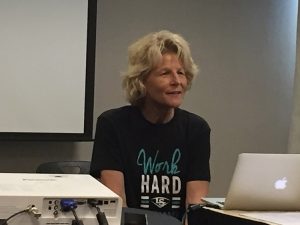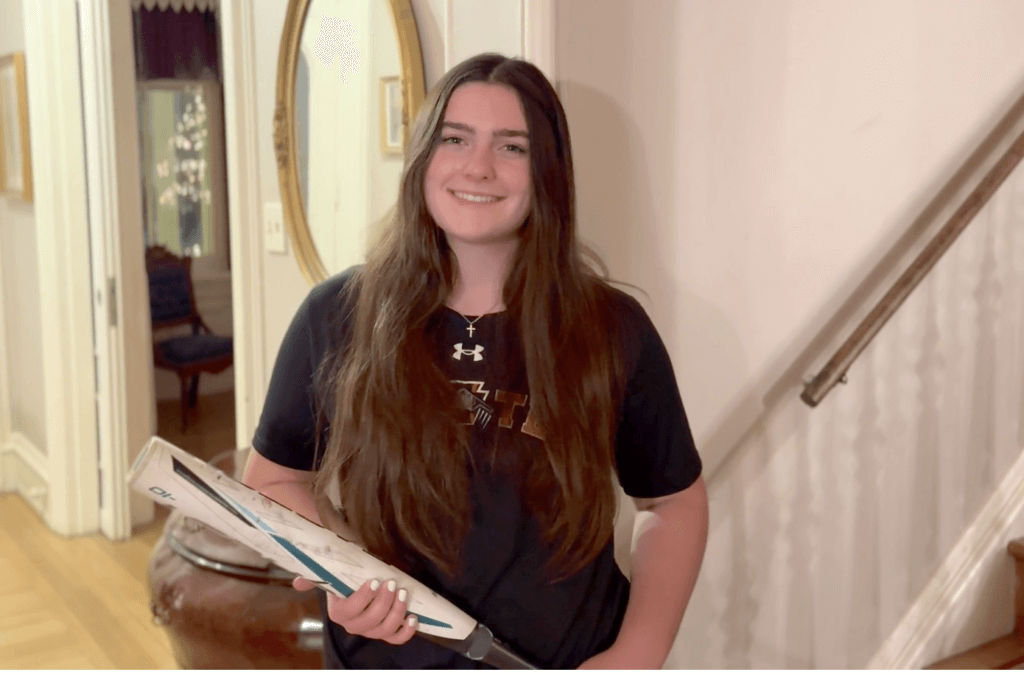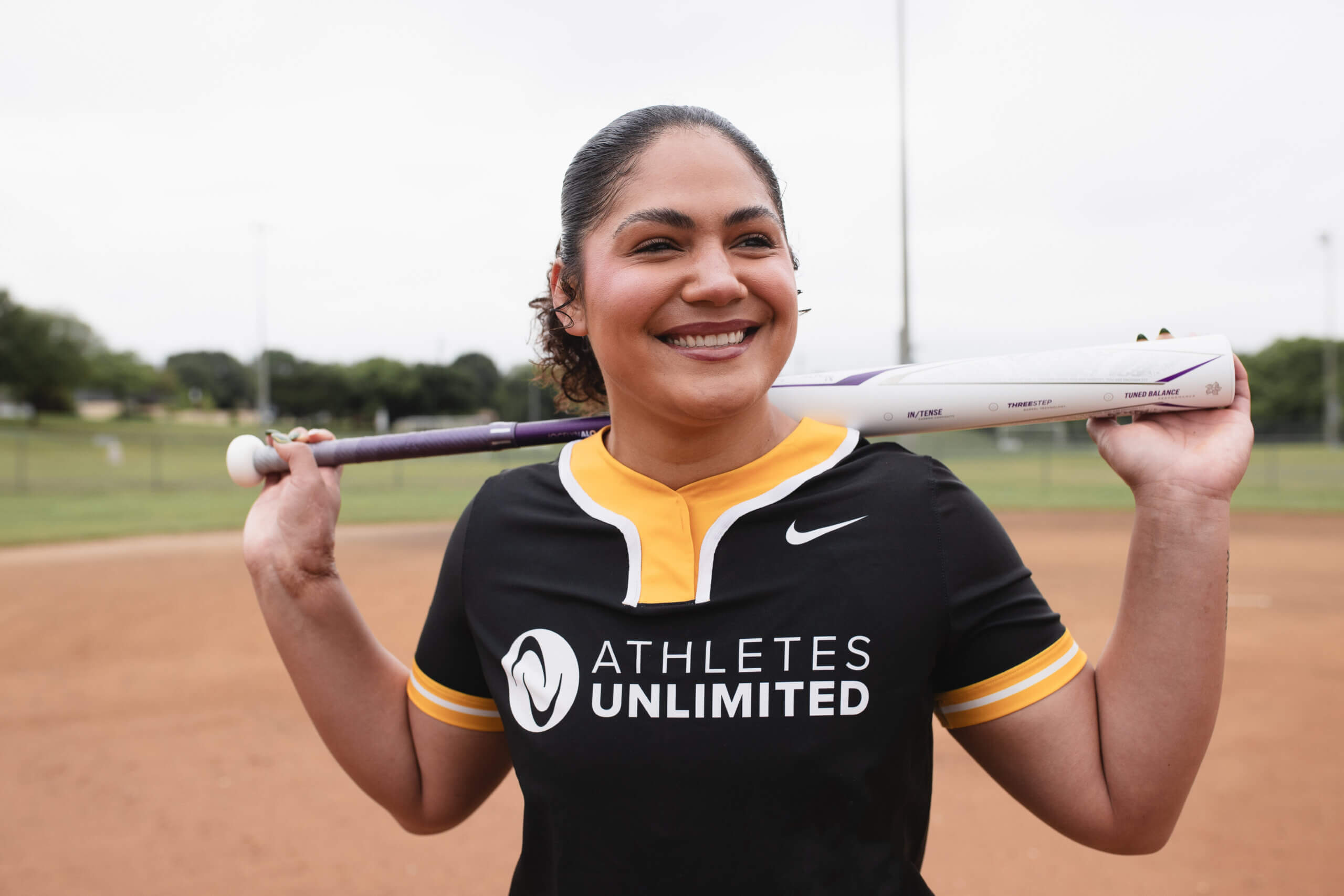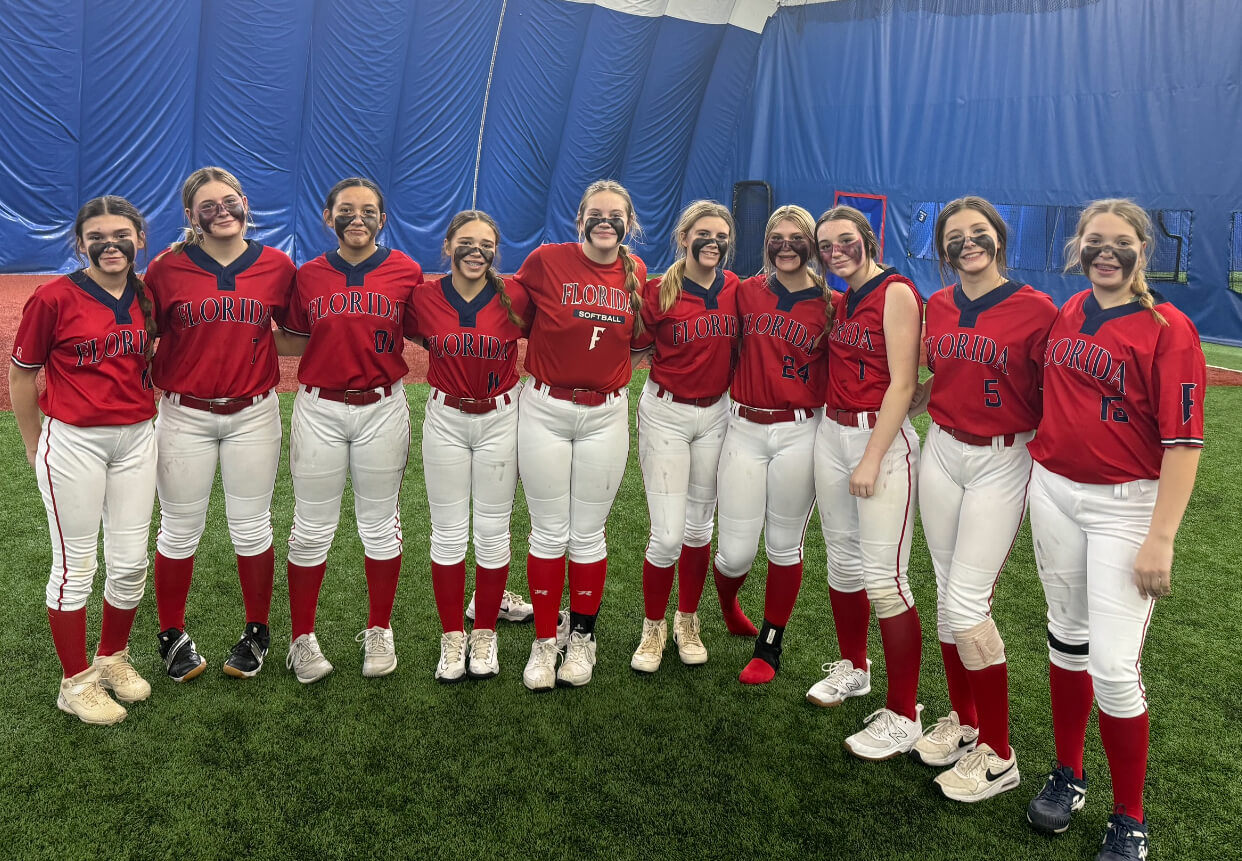
Many softball followers feel the Early Recruiting situation is the top problem in the game today.
With the news breaking last night that Alexia Carrasquillo from Woodstock, Georgia had committed to Florida in early January, making her the first 6th grader and 11-year-old ever to verbally commit to a major college for softball, it increased the rhetoric around the debate on the subject of Early Recruiting.
Early recruiting: the two biggest buzz words in the softball world today.
NCAA coaches love it or loathe it. Parents, club coaches, tournament directors, players, and even recruiting services are all lining up firmly on one side of the divide—or the other.
As expected, there have been strong sentiments and expressions flying around the internet on both sides of the issue and while most feel the trend of girls committing younger and younger is not a positive for the sport (it was just last fall that the very first 7th grader, Mia Williams from Florida, committed, also to the Gators), it wouldn’t be happening if there weren’t positives to it as well.
At the NFCA Convention in December, it was such a prevalent issue that the NCAA has decided this spring to vote on curbing what college coaches can do in regard to contacting prospective recruits.
In fact, a “Yes” vote in April of this year on a sweeping rule change would make it an NCAA violation for a D1 coach to speak to a player or her family about recruiting until September 1st of the player’s junior year (some think it will be modified to the sophomore year).
The knee-jerk reaction is that this is a great policy that will protect the players and make the playing field a level one, especially for late bloomers, but is that really the case?
Extra Inning Softball has today called several key figures in the softball world to get their insights—and, not surprisingly, many don’t wish to go on record because of the heated nature of the subject—but still, with their arguments in mind, we here present both sides of the topic.
We also want to get you—the softball fan—involved; if you’d like to provide your opinion on the matter, email us at [email protected] what you think and which side you’re on and we may include what you write in an upcoming article titled “The Softball Community’s Views on Early Recruiting!”
Please also include your name, city and state or state you wish to remain anonymous.
THE “PROS” OF EARLY RECRUITING
First, let’s start on a good note. The fact that players are getting recruited younger means the sport is thriving, at least to one prominent coach from a Top 25 university.
“We’re to a point where we’re in the spotlight and when something happens, it’s not just softball that notices, but the entire sports nation. It’s a good thing that the sport has garnered an increasing amount of attention.”
Adds legendary softball figure Sue Enquist, who won 11 National Championships at UCLA as a player and coach: “The collegiate game is growing because there is greater exposure through TV and college administrations are making a greater commitment to their budgets allowing more schools to recruit nationally. Growth from TV and media outlets creates interest at all levels. More participation creates more competition and greater development in the high-performance youth softball. That is positive.”
The state of softball is thriving in some respects, but Hall of Famer Sue Enquist worries that entrly-level softball numbers are declining.

But not all is rosy for the sport’s outlook—Enquist continues:
“Having said that, it’s interesting to note that, at the entry level, softball numbers are actually declining. This is a concern. An Aspen Institute Study showed two major reasons for the decline: players weren’t having fun and lack of quality coaching. When the overall pool gets smaller, overall talent levels will be negatively impacted eventually.”
A key, then, to making softball a positive in a young athlete’s life—certainly for those getting recruited—is to make it fun and the development process a beneficial one. Productive interactions with college coaches are especially crucial, many feel, and not just with the player.
One ACC assistant coach told Extra Inning Softball that an advantage to getting younger players in the fold is the “relationships you are able to build with the players and the family for four or five years prior to them getting to college. That is huge.”
“Also, you get to manage their emotions and personalities which you can learn along the way as to who they are and what they respond to. We won’t know exactly how they’ll perform under pressure, but the years we get to follow them gives us a good idea.”
The other obvious answer is it saves a ton of time, energy and stress in trying to decide along the way what university a student-athlete will go to.
Many players and parents have admitted it’s a huge load off the shoulders knowing that big stressor is eliminated allowing the softball standout to focus on academics and even improving her game and preparing for college life on and off the field.
But it’s clear that to get to the gold at the rainbow, it often takes a much more pro-active, rather than reactive, approach that can be a gamble expending money, time, effort and emotion.
Take the high-profile Carasquillo commit that was announced Friday as an example—her path is one at the top of the player-marketing food chain.
The family got her on a solid club team, the Tennessee Fury, that wasn’t afraid to travel from the East Coast to the West Coast on a high-visibility 12U stage, giving her the chance to shine at a national level which culminated in a break-through performance on the biggest stage of them all, PGF Nationals.
Many families, understandably, aren’t willing to play on teams with that level of travel burden at that age but that is often what it takes to be seen and considered ahead of the player’s peers if being able to verbal early is a priority.

For the Carasquillo family, they aligned themselves with well-connected names in the sport, attending Jen Schroder’s The Packaged Deal clinics three times—in three states along with working out with Stephanie Best from ProSwings and noted hitting coach Lincoln Martin, and then making a move to the Georgia Impact organization, a national program with muscle and influence in the recruiting department.
It all added up to be the perfect stage to showcase the young catcher at such a surprisingly young age.
So in the high risk, but high reward, game that is Early Recruiting, it’s not just talent, but dedication to proper training, technique, high-level competition and access to key relationships that are all part of the puzzle.
For Carasquillo, it worked, to say the least and who can fault her for committing at whatever age she is, to her dream school.
A revealing story shows that, while Early Recruiting as a general issue is frowned upon, if an individual family has a chance to “win the lottery,” the opinion can change quickly.
One notable softball figure, speaking before a group of parents at a prestigious national camp, asked, “How many of you are against early recruiting?”
Almost all raised their hand.
He then asked, “With your hands still up, how many of you—if your daughter got an offer from her dream school of Florida, UCLA, Alabama, Washington or whomever it may be it, when she was in the 6th, 7th or 8th grade—would not let her commit?”
Every hand went down.
Yes, there’s a lot that’s concerning about young players, who might still be playing with their Barbie Dolls, having to make a decision so impactful as to where she’ll attend college, but the ultimate “Pro” is that it, more likely than not, will put her on the path to a college future and that’s a dream any player or parent wants to pursue.
The recruiting journey isn’t just about the play on the field
 The recruiting process IS a journey and it’s not always a fun one—in fact, having highly famous and successful coaches pressuring you to choose his or her school is always going to be stressful, so finalizing the decision can actually be more beneficial than taking one’s time in listening to all the sales’ pitches.
The recruiting process IS a journey and it’s not always a fun one—in fact, having highly famous and successful coaches pressuring you to choose his or her school is always going to be stressful, so finalizing the decision can actually be more beneficial than taking one’s time in listening to all the sales’ pitches.
Several parents and player who have weighed in today echo the same sentiment: it was her dream school, and there is much less stress for her knowing she’s locked in (yes, we know it’s just a “verbal” agreement, but most realistically end up going where they committed).
One parent, who’s player committed the summer before her 9th grade, had this to say: “Recruiting is an exhausting roller coaster. It was stressful and emotional. I was so relieved when my daughter settled on a school. It gave her a path and road map to her future. I can’t imagine having to wait so long. I’m really not sure how not knowing where you’re going until you’re a junior or senior is less stressful.”
THE “CONS” OF EARLY RECRUITING
There are so many negatives to early recruiting it’s hard to know where to begin.
Let’s start with the idea that young girls—some not even teenagers yet (!) and their families—have the crazy pressure authority figures like college coaches putting a deadline on them to make a huge decision like choosing their college or risk losing the offer and opportunity because they’ll simply extend the scholarship to someone who will take it.
A major negative of early recruiting is the pressure on players to decide years before they’ll go to college.
 Players and their parents are being forced to make decisions on something where the payoff—beginning college—is many years away—in the case of 6th graders, it’s as far away as seven years down the road!
Players and their parents are being forced to make decisions on something where the payoff—beginning college—is many years away—in the case of 6th graders, it’s as far away as seven years down the road!
Side note: Carrasquillo isn’t the only 6th grader that’s been offered—we know of at least two others who have been and you can look for a mad dash to be made if and when the NCAA restrictions go into effect which will limit the age college coaches can even talk to prospects (Sept. 1 of the sophomore or junior year, depending on which version may get submitted).
In an interview several years ago, Patty Gasso of Oklahoma said, “I’m not a fan of early recruiting, but the bad thing is if I don’t go after a player when she has obvious talent I’ll be left behind.”
“Truthfully, I wish it were the way it used to be when kids were juniors in high school before they were getting offers. There’s so much growth and learning potential as they get through the high school years, but now we have eighth graders committing. It’s crazy.”
“There’s not a lot I can do about it other than just encourage the athletes that, if they’re going to be making decisions that early, they need to know a coach will expect them to work really hard.”
And that working hard is a problem. It’s human nature that once you get what you want—in this case an offer—then you cruise and don’t work as hard.
Legendary club coach Gary Haning, who started the OC Batbusters and ran them for over three decades while producing softball legends like Jennie Finch and Laura Berg, once said, “The problem with early recruiting is girls tend to ease up and only about 25 percent will push themselves and continue to work hard.”
“A lot will take the attitude of, ‘Well, I got my offer, I can let Sally play today because she’s not committed.’ There aren’t that many like Laura Berg who will continue to run through a wall for you even after they’re committed.”
And early isn’t always better. There’s the very real chance a girl who’s an All-American at an early age won’t even end up All-League by the time she graduates high school.
“You’re trying to project a young kid,” explains one coach whose team made the College World Series last year. “Who knows how they’ll turn out at 18U after they’ve been dominating the 14U age division? In fact, it’s often been the opposite for us–we’ve had a lot of kids who have committed late and they’ve turned out to be our best prospects.”
Said an ACC assistant: “Look at a program like Louisiana-Lafayette… they always got players late and they end up being really good players. It can be done. There are plenty of cases where a kid doesn’t get seen and then goes to the D1 level and lights it up.”
But the system does seemingly punish the kids who develop late, unfortunately. And that’s led to a frenzied panic among parents that has even started to drive club coaches and organization heads crazy.
Rare is the late-bloomer who goes to a major D1 school
 Said one top club organization founder on the East Coast, “Immediately after we had a girl in our program commit at a young age, every parent was calling and texting me why their daughter wasn’t getting the same recruiting attention. I told them, ‘Because this girl is a beast and a once-in-a-generation player and your daughter isn’t.’ That doesn’t mean she’s not good, it’s just people have started comparing to unique situations and it’s not fair to anybody.”
Said one top club organization founder on the East Coast, “Immediately after we had a girl in our program commit at a young age, every parent was calling and texting me why their daughter wasn’t getting the same recruiting attention. I told them, ‘Because this girl is a beast and a once-in-a-generation player and your daughter isn’t.’ That doesn’t mean she’s not good, it’s just people have started comparing to unique situations and it’s not fair to anybody.”
Coaches will admit that it’s become a numbers game and that they do have to recruit earlier so there is some truth to the cliché that the early (verbal) bird gets the worm.
“We’ve seen a 2020 kid, who’s a sophomore, and is really good, but we couldn’t take her,” admitted a coach for a program that made the Super Regionals last year. “Our whole staff was saying she should play at a Power 5 school, but no one has the money anymore.”
IS THE ANSWER COMING WITH THE NCAA RULES CHANGES?
The pending NCAA legislation proposed to put curbs on softball recruiting going younger and younger may help in time, but Enquist thinks a more fundamental change could make all the difference in the world.
“Until recruiting is solved through rule changes,” she begins, “we need to really encourage parents to look at recruiting like health and life insurance. Parents know insurance purchases are their responsibility. They scour the insurance market, compare and contrast and make thoughtful proactive decisions. They aren’t waiting for someone to tell them what insurance to buy.”
“I wish we could create a standard expectation that parents didn’t rely on a travel coach or college coach to discover their daughter. Parents are very responsible if they know they are expected to figure it out. Parents are really smart when they know what questions to ask in the recruiting process. We haven’t educated the parent on the ‘10-year-path-to-college’ journey. This journey is more than just recruiting: it’s financial planning, academic rigor fit, social fit, athletic fit and many other areas. That falls on all of us: NCAA, softball associations, and recruiting industry experts.”
“I wish every softball parent who enters this sport when their daughter is six years old was told, ‘Here is our snack list, schedule, your insurance protocols for health and your recruiting insurance $1-to-$1 policy which states every dollar you spend on softball teams, training and travel, you put a dollar in the bank.’”
“Now you have a solid financial back-up plan, the volunteer coach doesn’t have the parent expectations to be the recruiting master and most important, the student-athlete doesn’t feel so much pressure to get a scholarship.”
What will it take to shift the current thinking around path to college?
The retired Bruin coach, who now runs OneSoftball.com and looks to unify the softball community in areas of competitive character curriculum, technical instruction and path to college and stresses she wants “ONE Softball to be a trusted voice to the parent” finishes with an extra emphasis on parental education.
Sue Enquist believes parents need to be more educated on the 10-year recruiting journey
 “Parents are making important decisions about their children every Monday through Friday,” she stats. “They prioritize, weigh how it affects their future and other children and are proactive in gathering intelligence. Then Saturday hits and they turn their brain off, drop their kid off and rely on the other Dad/Mom volunteer coaches to be their recruiting czar? The most complicated, unregulated system (recruiting) and you are handing this over to the volunteer coach? It breaks my heart!”
“Parents are making important decisions about their children every Monday through Friday,” she stats. “They prioritize, weigh how it affects their future and other children and are proactive in gathering intelligence. Then Saturday hits and they turn their brain off, drop their kid off and rely on the other Dad/Mom volunteer coaches to be their recruiting czar? The most complicated, unregulated system (recruiting) and you are handing this over to the volunteer coach? It breaks my heart!”
“Until we have major rule changes, we all must encourage parents to take charge of their child’s 10-year path to college. Their journey is personal—it’s their child—and it must be proactive (find the trusted sources) and persistent (don’t let ‘hearsay’ influence you). And it needs to start when the child is six years old.”
Let’s just hope that Early Recruiting doesn’t dip down that young and kindergartners’ parents are being forced to decide where their athlete will be playing a dozen years down the road.
***
To add your 2 cents on the subject, email: [email protected] and be sure to include your name, city and state (or state you wish to remain anonymous).











